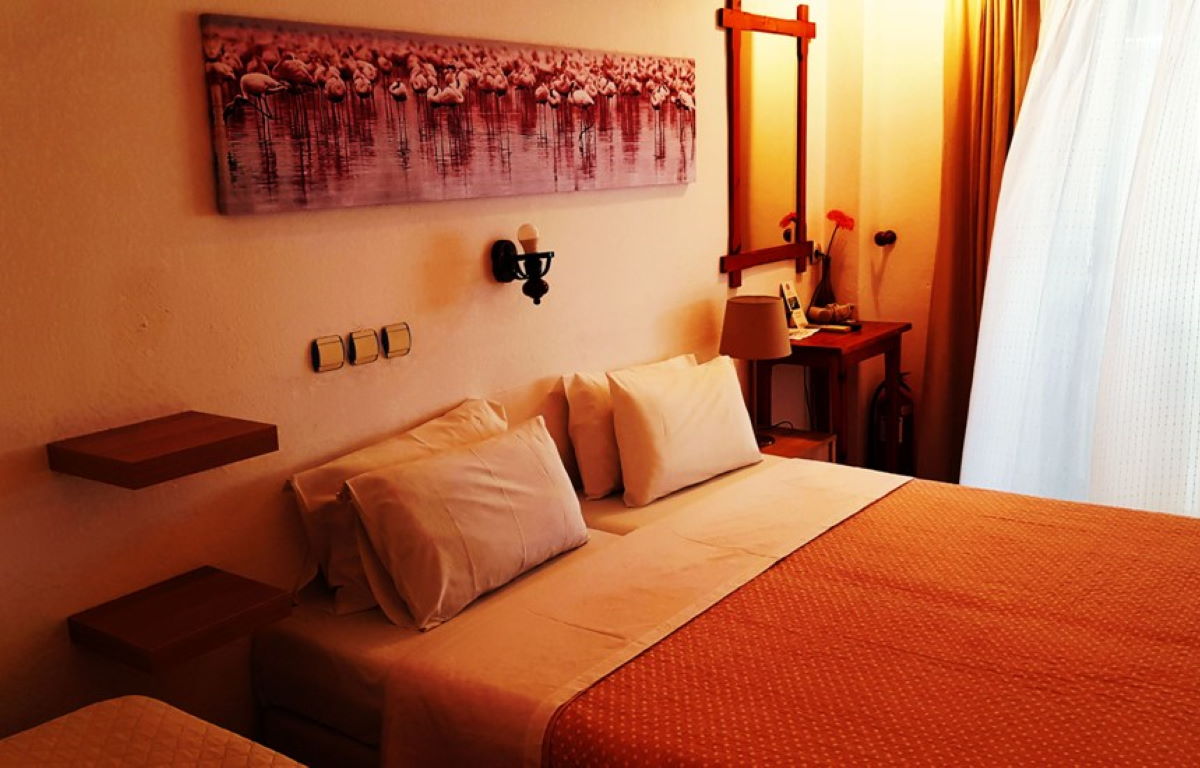
Founded: 10th century
Founder: Moysis,Aaron and Ioannis
Feast-day: 23rd of April
Library: 388 Slavic and 126 Greek manuscripts
Collection: The two icons of Agios Georgios
It is the first monastery on the SW of side the peninsula,at a distance of one hour from the sea. From the Tarsana(tower) on the beach with its characteristic agioritiko architecture, begins the road which ,despite the waterstream, leads to a kerb called Megalou Zigou,and once you've reached the end you will find standing impressively the imposing monastery.
Tradition claims that three brothers, Moses, Aaron and Ioannis, sons of the king of Archidas Ioustinianou,founded in the beginning of the monastic genealogy the monastery of Zografou.They have been claimed to not have decided to who this monastery should be dedicated to, so they left the issue to Gods will by depositing a piece of wood near the alter of the central church. After a while they saw the image of St. George depicted on this piece of wood and respected His wish so that is why this abbey was named St. George of the Painter (ZOGRAFOU meaning painter). In the 10th century,the golden bull was signed simultaneously by four kings who lived in the monastery from the 9th until the 14th century (Leon the 6th the Wise 972, Ioannis Ouglessis: 1371). More solid basis for the history of the monastery, can be considered an insertion to a "list" in"The first Tipiko TRAGOS" signed by Tsimiski in 972 and refered to the monastery as "St. George of the painter". In 980 it has already aquired the land surrounding the actual building together with the territory , a conclusion clearly made by written documents . Near the 11th century,the documents signed by the abbot Ioannis (1049 and 1051)were in greek.The first known abbot signing in bulgarian was Simeon in 1169. This proves that sometime between 1051 and 1169 the monastery was taken over or granted to Bulgarian monks. In any case, all abbots after Simeon, signed in bulgarian.This reveals that this monastery is Bulgarian.
By the Bulgarian kings it is first known that the monastery was protected by Ioannis Kaliman in 1192. Most important however elected protector and benefactor was Ioannis 2nd Asan (1218-1241),who is refered to as the owner of the Abbey, up to today.Well known Byzantine Rulers who protected it include Maria Tzousmeni (1142), daughter of the Emperor Ioannis Komninou. From the relative document we learn that previous protectors were Alexios 1st Komninos (1081 -1118) and his brother Manouel. Official documents in favour of the Abbey (1266,.1267, 1276) refer to the fact that Micheal 7th Paleologos (1259-1282) was also a ruler,but whos name was and policies were connected with the Filenotikon raids against various monasteries including the one of Zografou. Throughout the whole region 26 victims of this raid are still being honered. This Abbey was also protected by Andronikos 2nd (1282-1328), Andronikos 3rd (1328-1341) and Ioannis 5th (1341-1376).
Serbian kings also assisted the Abbey but most of all Stefanos Dusan (1331 -1355) and Ioannis Ouglesis (1350-1371). In the period of the Turkish domination the most important perhaps protector of the Abbey was Stefanos the Great(1457-1504) Voivod of Moldavia, who also built the tower 'Tarsana'. Intellectual belief and strong rejection against all racial discrimination were and are the sovereign elements for the organization "Abbey of Bulgarians" in the monastic community of Mount Athos. The prevailiing reciprocity and brotherhood in the relationship between the orthodox nationalities in Athos,are virtues revealed to us also by the fact that both Greek and Bulgarian monks lived together in the Abbey during the mid 19th century. Ofcourse up to 1845 the preachings were in both languages. The Greek signs on the wallpaintings also testify this.
From the architectural point of view,the east and south wings built more traditional, together with the west and north which are of more new technique built in the 2nd half of the last century complete the imposing monastery.In the courtyard, apart from the catholic, also standing are the graphic chapel of the Virgin Mary (Akathistou), built in 1764, the marbel bottle and the cenotaph dedicated to the real victims who sacrificed their lives in order to save the monastery.











